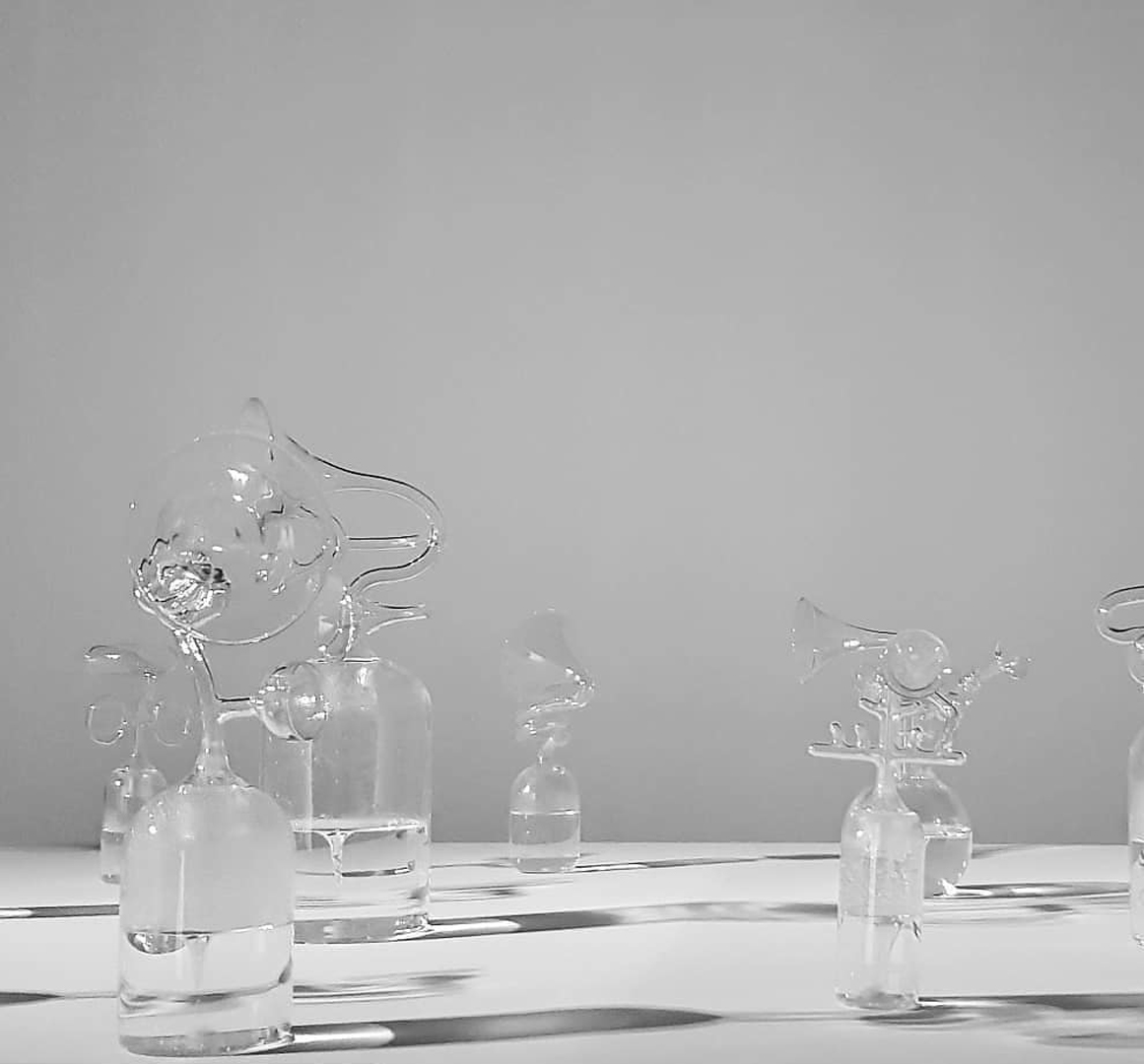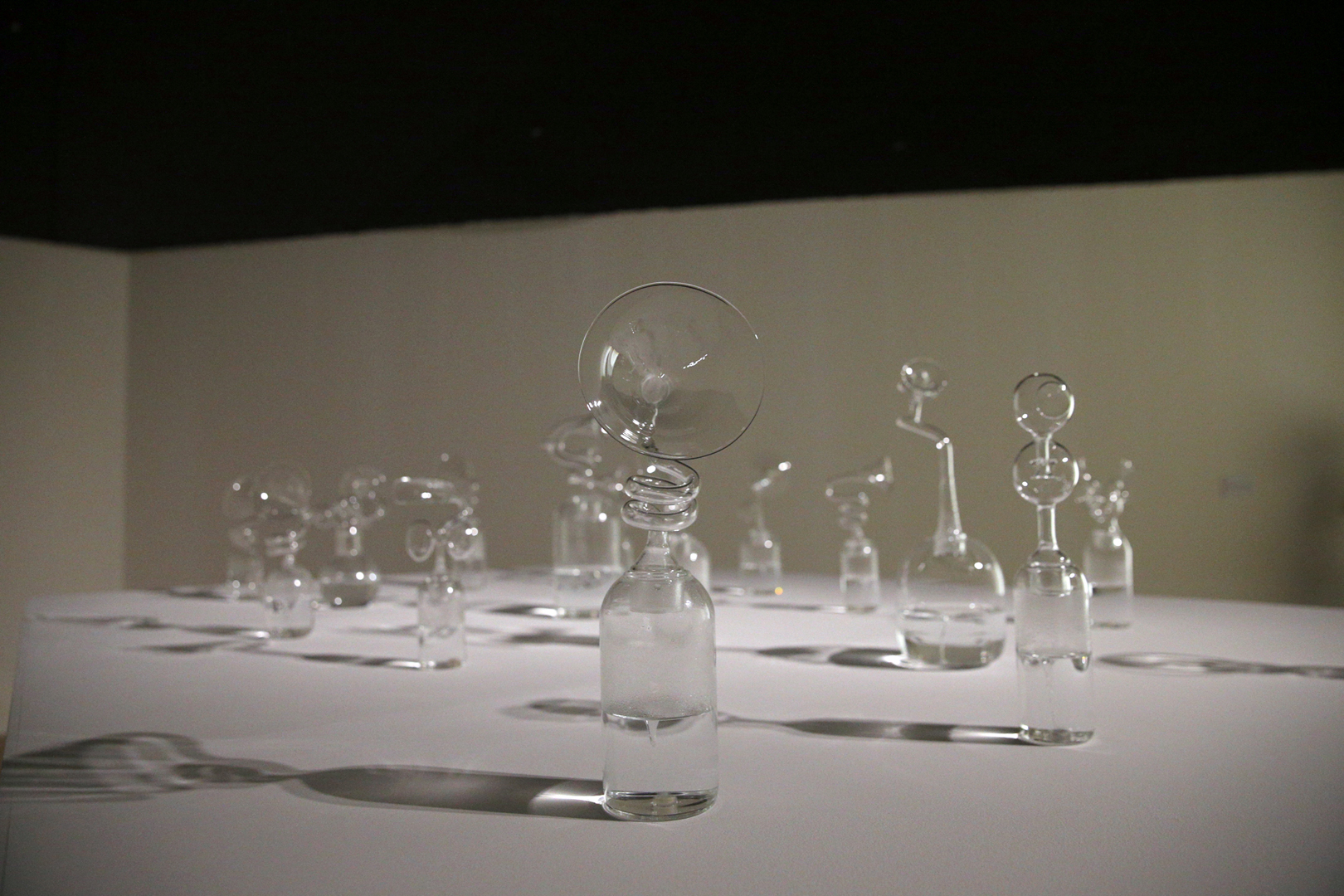“Chozumaki” by Nelo Akamatsu
Title:
Artist(s) and People Involved:
Exhibiting Artist(s):
Symposium:
Venue(s):
Medium:
Artist Statement:
Chozumaki is a sound installation which consists of glass vessels filled with water. The circulation of water causes a vortex and sparkling bubbles produces clanging but sensitive sonority. These small sounds are amplified through the pipes and horns on the top of uniquely designed glass vessels. Chozumaki is an original word by the artist, which combines two Japanese words, Chozubachi (stone washbasin) and Uzumaki (vortex). Vortex is one of the fundamental elements of the universe. The galaxy, typhoons, vines and snails, they all have fractal vortex forms from the immense to the tiny. Vortex is deeply concerned with human aesthetic. As a typical example, Golden Ratio is based on the shape of Vortex. In the field of fine arts, architecture and design, Golden Ratio is widely utilized for the expressions with harmonious beauty.
Chozubachi is a stone washbasin for guests to wash their hands in for purification when participating in a tea ceremony. Chozubachi has a function of making them notice that they are going to enter the eternal universe and inner sanctum of the tea ceremony from the outer world and their ordinary life. The design of top components of vessels is associated with human organs like cochlear ducts in ears, lungs, pancreas, heart and etc. If the time has come when the artificial intelligence overcome humans in every aspects of life, the mankind may exist merely as organs of their bodies. In the narrative for Akamatsu’s artwork, humans as organs will listen to the sound of vortexes and at the same time identify with the universe. The sight and sound of the water vortex will remind viewers of crossing the boundary between the physical world and the psychological world, and will extend their perception of vital organs.






